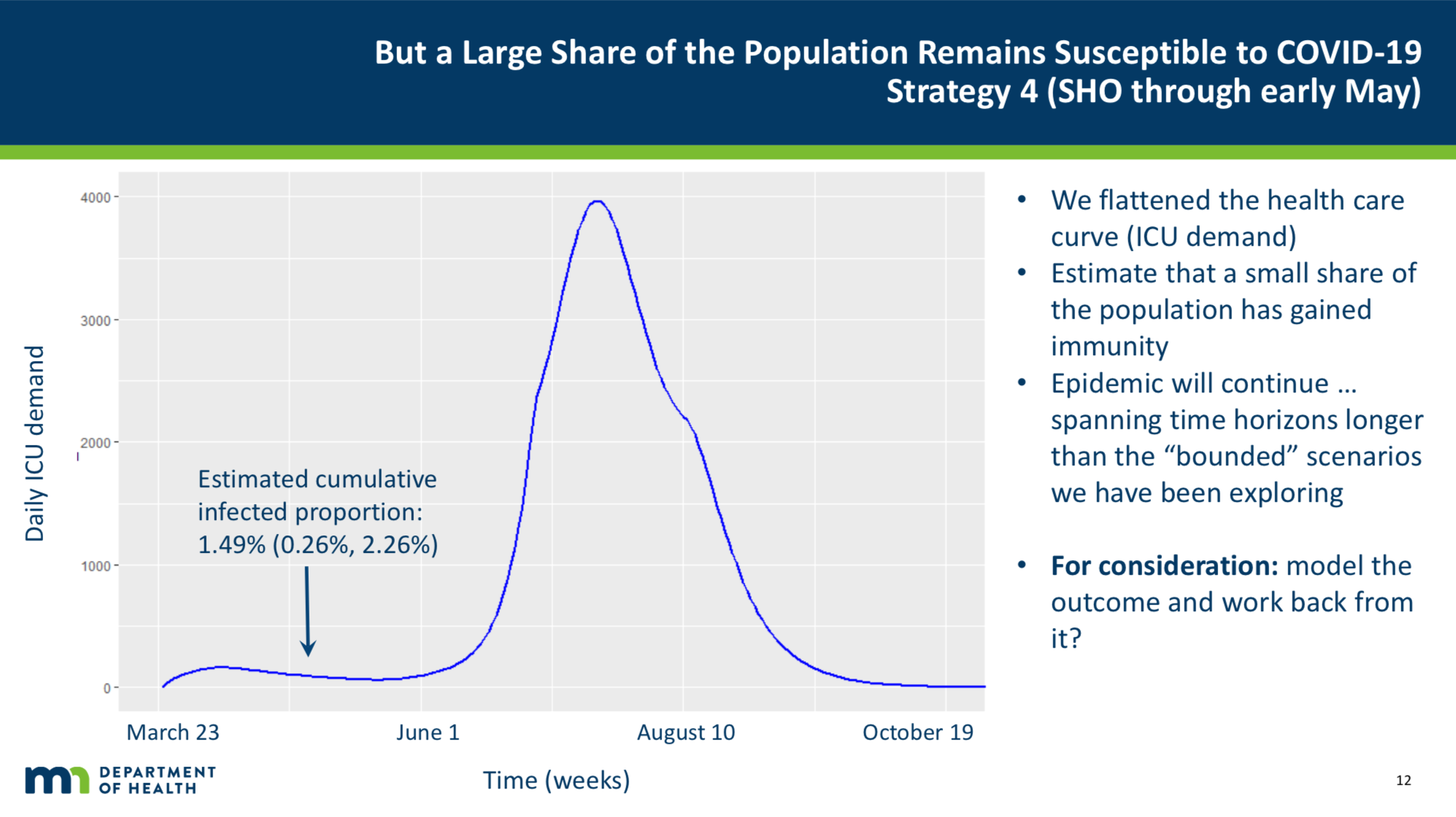An unexplained note included in a slideshow presentation released by the Minnesota Department of Health (MDH) has some concerned citizens questioning the accuracy of the models used to justify the extended shutdown.
The University of Minnesota (UMN) has produced mathematical models designed to foretell the spread of coronavirus and serve as justification for the governor’s actions to quell the pandemic.
However, concerned citizens have spotted what appears to be a strange note leftover from an earlier draft written by either the University or MDH. Some claim this to be evidence that the modeling process lacks integrity or is bias towards a certain outcome.
“For consideration: model the outcome and work back from it?” the note reads.

Minnesota State Senator Roger Chamberlain chimed in shortly after this unusual note was first highlighted online asking a question about what it might mean.
Walz Updated MN model for covid19. Slide 12, bullet 4, “Model outcome and work back from it?” Is this to provide outcome then adjust model to fit the desired outcome? https://t.co/KweZW3Murt
— Roger Chamberlain (@rcchamberlain1) May 11, 2020
State Representative Jeremy Munson also commented, saying that the the new 2.0 models, are “sloppy.” He claims the updated model as proof that state officials are “desperately trying to find a way to justify their destructive ‘stay at home order’ that is destroying jobs and the economy.”
Citizens are just as concerned with how the Walz administration is using the new models as state leaders.
“Leftover comment in slides shows MDH is giving UMN modellers the outcome and asking them to work backwards,” one Minnesotan claimed via Twitter.
“Is the Minnesota model based upon guessing outcomes and working the model to meet the preconceived result?” asks another.
The ultimate conclusion of the new models seems to be that “extended social distancing” will have a measurably favorable impact on Minnesota ICU demand transmission compared to other less drastic approaches.

UMN first unveiled its first predictive models in April. At that time, the numbers predicted that less than one one hundredth of one percent (<.01%) of populations under the age of 60 will die of the virus. This prediction appears to have been at least roughly correct as the overwhelming majority, as many as 99.24%, of COVID-19 related deaths in Minnesota have occured in nursing homes or in relation to a severe underlying condition.
As of the first of this month, Minnesota had paid over $1,500,000 to the UMN for the models.
















